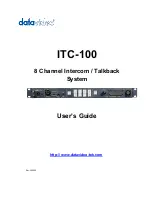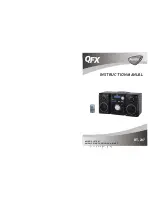
CAN-8x23 user’s manual (Revision 3.20, Ma r/08/2012) ------
24
ID
RTR
Data
Length
8-byte Data
11-bit data is limited in the ID field. It is useful in the arbitration mechanism.
The RTR, limited in 1-bit data, is used for remote-transmitting requests as the
value is set to 1. The data length, limited in 4-bit data, shows the valid data
number stored in the 8-byte data field. The last field, 8-byte data, is applied to
store the message data.
In the CANopen specifications the 4-bit function code and 7-bit node ID
are assumed to combine the 11-bit ID of CAN message, and named the
communication object ID (COB-ID). The COB-ID structure is displayed below.
Function Code
Node ID
bit 10
bit 0
The COB-IDs are used for recognizing where the message comes from or
where the message is sent to, as well deciding the priority of the message
transmission around node network. According to the arbitration mechanism
rule of the CAN bus, the CAN message with the lower COB-ID will get the
higher priority to be transmitted. In the CANopen specifications some COB-IDs
are reversed for specific communication objects , and can't be defined
arbitrarily by users. The following list shows these reversed COB-IDs.
Reversed COB-ID (Hex)
Used by object
0
NMT
1
Reserved
80
SYNC
81~FF
EMERGENCY
100
TIME STAMP
101~180
reversed
581~5FF
Default Transmit-SDO
601~67F
Default Receive-SDO
6E0
reversed
701~77F
NMT Error Control
780~7FF
reversed
















































